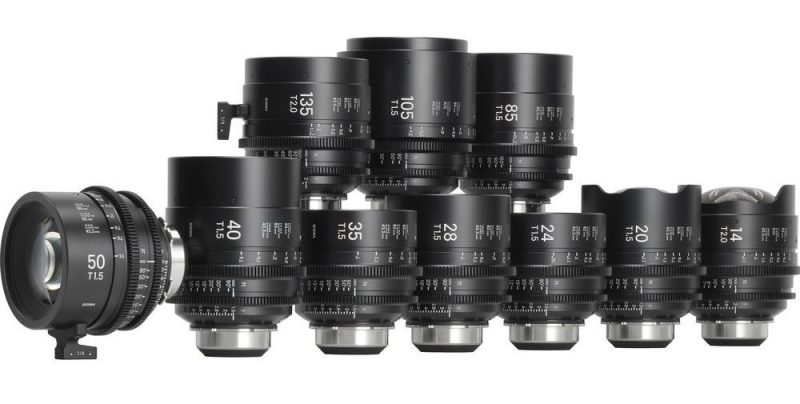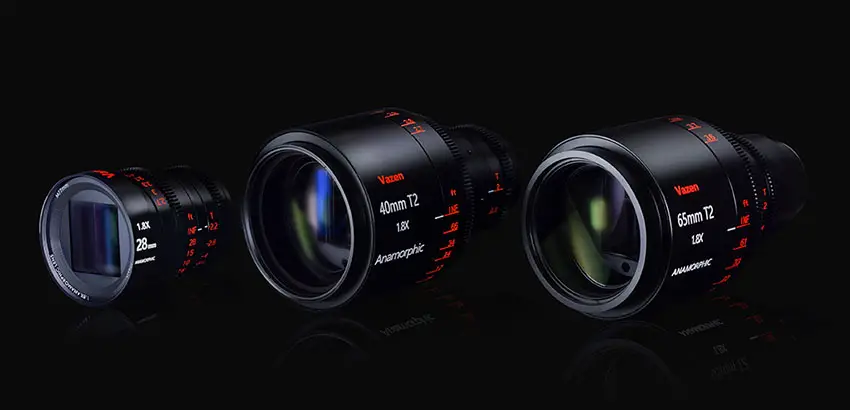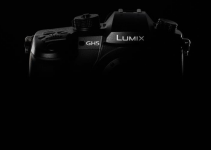Glass is always where you should invest. Cameras come and go quickly since the advent of digital, but lenses tend to last you for years or even decades. Cine lenses is particular have showed a particular staying power. However, cinema-specific optics are usually very expensive and heavy – especially when compared to more affordable stills-focused options. Are they always worth that added cost and size?
Things are changing constantly in the film/video industry and it is worth taking a look at whether it is worth investing in cine lenses still. Monkeypixels has a nice breakdown of the pros and cons.
Still Lenses vs Cine Lenses
Might as well start by comparing the two common lens options – stills and cine. There are quite a few distinct differences.
Among the first is how exposure is measured between the two lenses. Stills lenses use the simple f-stop while cinema glass measures in T-stops. What’s the difference? F-stops are determined mathematically based on the size of the aperture in relation to the focal length.
While it can give an estimate on exposure, it isn’t a perfect measurement when comparing two different lenses. T-stops on the other hand are actually talking about the transmission of the lenses. Two lenses set to the same T-stop should produce the same exact exposure. Getting exposure right and consistent is much more critical for video productions.
A secondary difference related to aperture is that cinema lenses are usually de-clicked while still lenses have clicked stops. Photography doesn’t need smooth adjustments while video does.

Image Credit: Sigma
Cinema lenses are consistent when it comes to shape and size as well. While stills lenses are a variety of shapes and sizes, cinema lenses are designed to be the same size so that you can quickly swap them out and keep all your other accessories, e.g. matte boxes and follow focuses, in the same position.
When it comes to focus, modern still photography lenses are meant to be fast and use autofocus. To facilitate this the lenses generally have very short focus throws. For video, you want more precise control over your focus and most of the time you will be operating it manually. Cinema lenses have long focus throws so you can very carefully set focus and operate it while shooting.
Zoom lenses are a whole other thing for cinema vs stills. Cine glass is designed to be parfocal. What this means is that if you adjust the focal length the focus stays set to the same position/distance. For less-precise stills lenses the focus point might actually change as you zoom in or out. If you need to zoom during a shot, being parfocal is important.

Image Credit: Venus Optics
Image Quality
Believe it or not, image quality is not the main reason that cine lenses are more expensive. It is certainly a factor, but today you can get incredible image quality on both affordable stills lenses and expensive cine glass. Examples of this are the Sigma Cine lenses which are simply the stills lenses re-housed in cine-specific bodies. Even Canon’s cinema lenses are based on older designed.
There are some super expensive options that do focus entirely on maximum image quality, but those aren’t exactly for most people. Alternative glass exists for video as well, such as anamorphic to get a distinct look.
Generally speaking, cine lenses focus on delivering a consistent look across the line. This means if you pick out a line of lenses from one manufacturer the color rendering, sharpness, etc. will match. So during a project you can swap out lenses for different shots and keep everything looking similar.

Image Credit: Vazen
Build & Handling
Cine lenses aren’t always ideal. The longer focus throw in particular is designed for rigs and larger productions. If you are shooting handheld as a one man band the extra-long focus throw might be tough to manage if you need to move broadly through the range. Stills lenses might be better for these types of scenarios.
A good reason to move up to cinema glass is the overall quality—specifically regarding build. Cine lenses are built to be more sturdy and have well-engineered housings. If you are a professional and need reliability and put your equipment through tons of shooting, you want something that’ll last and can take a bump or two on occasion.
Sometimes it is just a preference thing as well. Cinema glass has a different feel and can put a different spin on your production. Using cinema glass gives an air of professionalism and even though there might not be a difference in the imagery captured, it can help on set.
Overall Thoughts
It really depends on who you are. Most independent shooters working by themselves with more affordable cinema cameras or even mirrorless/DSLR will likely enjoy the benefits of still lenses. Namely that they are cheaper, can be found with autofocus, and have excellent image quality. The extra cost in both money and operating procedure for cine lenses can make things unnecessarily more difficult.
Maybe at some point you can add in one or two cinema lenses over time, but you don’t need to blow your budget on cine-specific lenses.
What are your thoughts on cine vs stills lenses?
[source: Monkeypixels]
Disclaimer: As an Amazon Associate partner and participant in B&H and Adorama Affiliate programmes, we earn a small comission from each purchase made through the affiliate links listed above at no additional cost to you.




